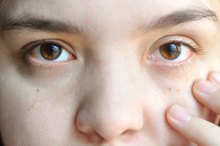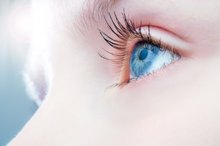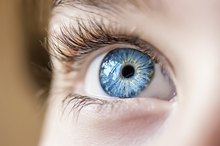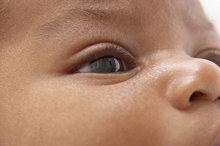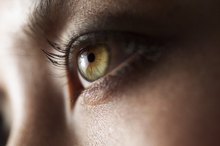The epicanthal fold, an extra skin fold that covers the inner corner of the eye, can be a normal trait in infants of East Asian or Native American descent. They inherit the fold, which gives the eye an almond-shaped appearance, from their parents. However, in some cases, an epicanthal fold can be a sign of a genetic abnormality, most commonly Down Syndrome.
Do These Extra Skin Folds Cause Eye Problems?
Epicanthal folds, unless associated with a genetic condition, do not by themselves lead to any problems with vision. They do not obscure an infant’s sight. However, it might give the appearance that the baby’s eyes are not completely aligned with one another. The medical term for this condition is strabismus. However, children with epicanthal folds do not actually have crossed eyes. They instead have a condition called pseudostrabismus, which is the appearance of crossed eyes.
- Epicanthal folds, unless associated with a genetic condition, do not by themselves lead to any problems with vision.
- They instead have a condition called pseudostrabismus, which is the appearance of crossed eyes.
What is Pseudostrabismus?
Eye Growth From Childhood to Adulthood
Learn More
Pseudostrabismus is the false appearance of eyes that do not look straight ahead. The epicanthal fold makes it seem like the eyes might be going in slightly different directions, when in fact, they are aligned.
According to the website for the American Association for Pediatric Ophthalmology and Strabismus, pseudostrabismus gives children a false appearance of the eye turning inward because “the skin fold at the inner corner of the eyelids can be broad... [and can] contribute to a cross-eye appearance since there is less space (white area) between the iris and the inner corner of the eyelid. This is especially noticeable in pictures.”
- Pseudostrabismus is the false appearance of eyes that do not look straight ahead.
- According to the website for the American Association for Pediatric Ophthalmology and Strabismus, pseudostrabismus gives children a false appearance of the eye turning inward because “the skin fold at the inner corner of the eyelids can be broad... [and can] contribute to a cross-eye appearance since there is less space (white area) between the iris and the inner corner of the eyelid.
How Can We Differentiate Pseudostrabismus from Strabismus?
A doctor should be able to notice the difference between pseudostrabismus and strabismus by shining a flashlight into the child’s eyes 1. When the child looks at the light, the doctor will see two small reflections on the surface of the pupil. If the eyes are aligned, or both looking in the same direction, the light will be reflected from the same spot of each eye.
What is the Treatment for Pseudostrabismus?
What Causes Nystagmus in Newborns?
Learn More
Making the correct diagnosis, or telling the difference between strabismus and pseudostrabismus, is essential, because pseudostrabismus does not require any treatment. As the child gets older, his or her face will mature and the false appearance of the eyes turning inward will gradually improve.
When Should I See a Doctor?
As with other medical concerns, parents should seek advice from a doctor if they have any uncertainties or doubts, because a proper and timely diagnosis can be essential to getting appropriate and early treatment. Parents should see a doctor if they think the eyes are misaligned, if they are concerned about the epicanthal folds, or notice any other issues in their child’s development.
Related Articles
References
- Wright, Kenneth Weston and Peter H. Spiegel. Pediatric Opthalmology and Strabismus. "Pediatric Eye Examination." by Ann U. Stout. pp. 57-67.
- Wan MJ, Vanderveen DK. Eye disorders in newborn infants (excluding retinopathy of prematurity). Archives of Disease in Childhood - Fetal and Neonatal Edition. 2014;100(3). doi:10.1136/archdischild-2014-306215
- Ye XC, Pegado V, Patel MS, Wasserman WW. Strabismus genetics across a spectrum of eye misalignment disorders. Clin Genet. 2014;86(2):103–111. doi:10.1111/cge.12367
- Cotter SA, Varma R, Tarczy-Hornoch K. Risk factors associated with childhood strabismus: the multi-ethnic pediatric eye disease and Baltimore pediatric eye disease studies. Ophthalmology. 2011;118(11):2251–2261. doi:10.1016/j.ophtha.2011.06.032
- Helveston EM. Understanding, detecting, and managing strabismus. Community Eye Health. 2010;23(72):12–14.
Writer Bio
Mitali Ruths has been a professional writer since 2008. She received her M.D. from the Baylor College of Medicine in Houston and completed her pediatrics internship at Texas Children's Hospital. Ruths has worked as a magazine editor and contributed to several online publications.




